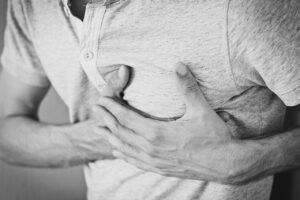How to Identify the Signs of a Heart Attack and What to Do
A heart attack is a serious medical emergency that occurs when the blood flow to the heart is blocked, leading to damage to the heart muscle. It is essential to know the signs of a heart attack and what you should do if you or someone near you experiences one. In this blog, we shall explore how to identify the signs of a heart attack and appropriate actions to take.
The most common and well-known sign of a heart attack is chest pain. The pain may last for a few minutes or longer and might feel like pressure, tightness, or a squeezing sensation in the chest. The chest pain may also radiate to other parts of the body, including the arms, neck, or jaw. If you experience these symptoms, it is essential to seek immediate medical attention by calling emergency services or visiting the nearest emergency room.
Another sign of a heart attack is shortness of breath, which may occur along with chest pain or on its own. You might feel as though you cannot catch your breath, and you may experience a gasping sensation. If you notice any difficulties in breathing, it is essential to seek immediate medical attention.
In addition to chest pain and shortness of breath, other signs of a heart attack include fatigue, weakness, dizziness, nausea, and vomiting. It is essential to note that these symptoms may differ between men and women. For example, women may experience symptoms such as indigestion, abdominal pain, or back pain.
It is crucial to pay attention to these symptoms and seek medical attention promptly if you suspect a heart attack. If the symptoms are severe or worsen over time, do not hesitate to call emergency services. Doing so may be lifesaving.
Suppose you recognize the signs of a heart attack in someone. In that case, it is essential to act quickly to increase their chances of survival. First, call emergency services or instruct someone nearby to call if you are unable to do so. Quick action is vital in saving lives in cases of heart attacks.
Next, if the person is conscious, make them comfortable by helping them sit down or lie down, whichever they prefer. Loosen any tight clothing, such as collars or belts that may restrict their breathing. You can also help them take their prescribed medication, such as aspirin, if they have it at hand.
While waiting for the paramedics to arrive, it is essential to monitor the person’s condition carefully. Note the time when the symptoms began, and any changes that might occur while waiting for medical help. If the person becomes unresponsive or stops breathing, start performing CPR if you are familiar with it.
It is essential to note that a heart attack can happen to anyone, regardless of their age or health status. Therefore, it is essential to lead a healthy lifestyle by eating a balanced diet, exercising regularly, managing stress, and avoiding habits such as smoking and excessive alcohol consumption.
Regular visits to the doctor for check-ups are also crucial in detecting and managing risk factors for heart attacks, such as diabetes, high blood pressure, and high cholesterol levels. Early detection and management of these conditions are essential in preventing heart attacks.
Recognizing the signs of a heart attack is essential in increasing the chances of survival. Chest pain, shortness of breath, fatigue, weakness, dizziness, nausea, and vomiting are some of the symptoms of a heart attack. It is crucial to seek immediate medical attention by calling emergency services or visiting the nearest emergency room if you notice any of these symptoms. Acting promptly can help save lives. Finally, a healthy lifestyle and regular check-ups with a doctor are essential in preventing heart attacks.


Comments